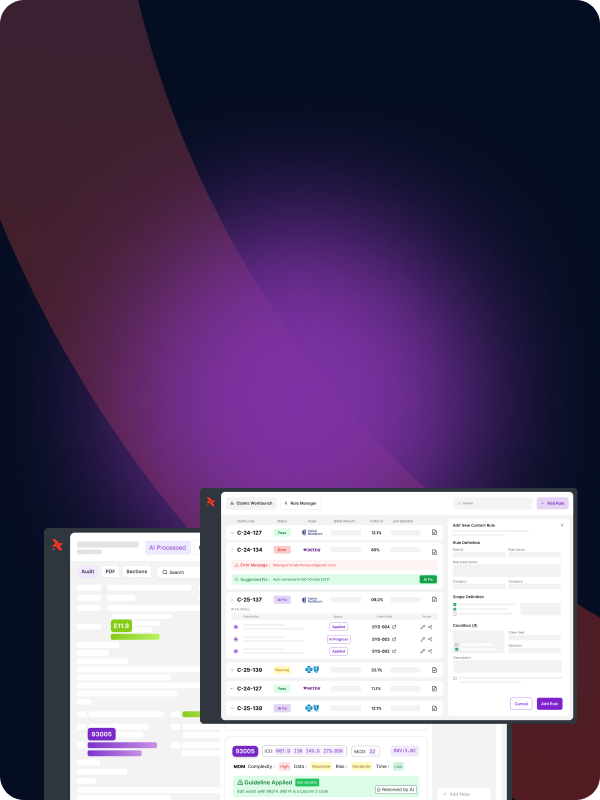.webp)
Commonly Missed Medical Codes and How to Find Them

Common missed codes in medical coding can vary depending on the specialty, type of service, and coding system used (such as ICD-1t0-CM for diagnoses, CPT for procedures, etc.). However, here are some general categories and examples of commonly missed codes:
1. Chronic Conditions: Often, chronic conditions that affect the treatment of the primary complaint can be overlooked, such as diabetes (e.g., E11.9) or hypertension (e.g., I10).
2. Late Effects: These are the residual effects that occur following the acute phase of an illness or injury, such as the late effects of stroke (e.g., I69.90).
3. External Causes and Place of Occurrence: These codes indicate how the injury or condition occurred and where it happened, and they’re often missed (e.g., W01.0XXA for a fall on the same level due to slipping).
4. Severity Levels: For some conditions, there are codes that indicate varying levels of severity, such as asthma (e.g., J45.21 for mild intermittent asthma).
5. Signs and Symptoms: Sometimes the symptoms accompanying the primary diagnosis are overlooked, such as cough (e.g., R05) or fatigue (e.g., R53.83).
6. History Codes: When a patient has a history of a certain condition, even if it’s no longer being treated, it can be relevant to their current health status (e.g., Z86.74, a personal history of sudden cardiac arrest).
7. Status Codes: These codes indicate that a patient has a certain status affecting their health, such as having a pacemaker (e.g., Z95.0).
8. Preventive Services and Counseling: Codes for preventive services like vaccinations (e.g., Z23) or counseling on tobacco use (e.g., 99406) are often overlooked.
9. Hierarchical Condition Categories (HCC): These codes are crucial for risk adjustment in certain payment models, and can often be overlooked, such as coding for Major Depressive Disorder (e.g., F32.9).
10. Unspecified Codes: Sometimes a more specific code should be used, but the generic “unspecified” code is used by mistake.
11. Procedure codes: When it comes to outpatient and inpatient procedures, relevant codes that encompass additional services, supplies, or nuances in the procedure can sometimes be missed.
Remember that accurate coding is crucial not just for reimbursement, but for patient care, reporting, and health record accuracy. It is essential that coding professionals stay up to date with coding guidelines and receive ongoing education. Additionally, utilizing coding audits can help in identifying commonly missed codes within a particular practice or specialty.
%201.png)









